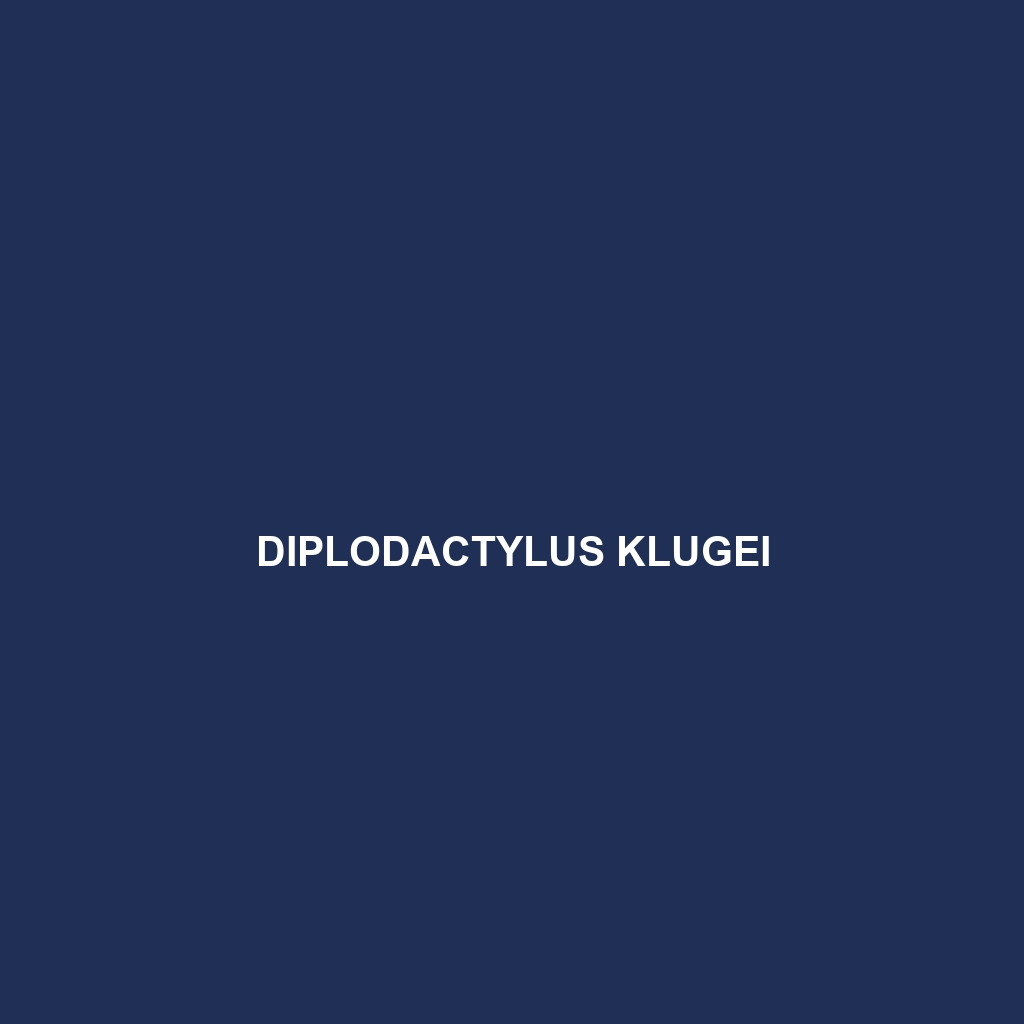Species Description: Diplodactylus klugei
Common Name: Diplodactylus klugei
Scientific Name: Diplodactylus klugei
Habitat: Diplodactylus klugei is primarily found in the arid and semi-arid regions of southeastern Australia. This gecko thrives in rocky outcrops and scrublands, often inhabiting areas with scattered vegetation which provides both shelter and hunting grounds. The specific habitats include dry forests, woodlands, and coastal dunes where the climate is generally warm and dry, characteristic of Australian desert environments.
Physical Characteristics: The Diplodactylus klugei typically reaches a size of about 12 to 15 centimeters in total length. Its coloration features a blend of sandy browns and muted yellows, allowing it to blend seamlessly with its surroundings. Notable characteristics include a flattened body and large, bulging eyes, which give it excellent night vision—a crucial trait for a nocturnal predator. Its skin exhibits small, tuberculate scales, which contribute to its distinctive texture.
Behavior: This species demonstrates primarily nocturnal behavior, being most active during the night when it forages for food. Diplodactylus klugei is known for its climbing ability, often seen navigating rocks and trees with agility. Social interactions include a variety of vocalizations during mating seasons, and it is also known to exhibit territorial behaviors, particularly among males.
Diet: Diplodactylus klugei is primarily insectivorous, with a diet consisting of a variety of insects, including crickets, moths, and beetles. Additionally, it may consume small arthropods and other invertebrates, utilizing its keen sense of sight to hunt effectively at night. The species has adapted to its environment, making it a skilled forager within its habitat, helping to control insect populations.
Reproduction: Breeding typically occurs in late spring to early summer. Female Diplodactylus klugei usually lay one to two eggs, which are incubated in the sandy soil or rock crevices of their habitat. The eggs take approximately 60 to 70 days to hatch, and young geckos emerge fully formed, ready to begin life in their desert environment. Courtship behaviors may include displays of head bobbing and tail waving by males to attract potential mates.
Conservation Status: As of the latest assessments, Diplodactylus klugei is classified as ‘Least Concern’ on the IUCN Red List. However, habitat loss and climate change pose potential threats, and continuous monitoring is advised to ensure population stability.
Interesting Facts: Known for their distinctive ability to lose their tail as a defense mechanism—a process known as autotomy—Diplodactylus klugei can regenerate lost tails over time. They are also a part of local folklore, often seen as a symbol of resilience and adaptability in the harsh Australian landscape.
Role in Ecosystem: Within its ecosystem, Diplodactylus klugei plays a vital role as both a predator and prey. By feeding on insects, it helps maintain the balance of the insect population, thus contributing to the health of its habitat. As a prey species, it serves as a food source for larger predators, making it an integral part of the food web in its ecological community.
